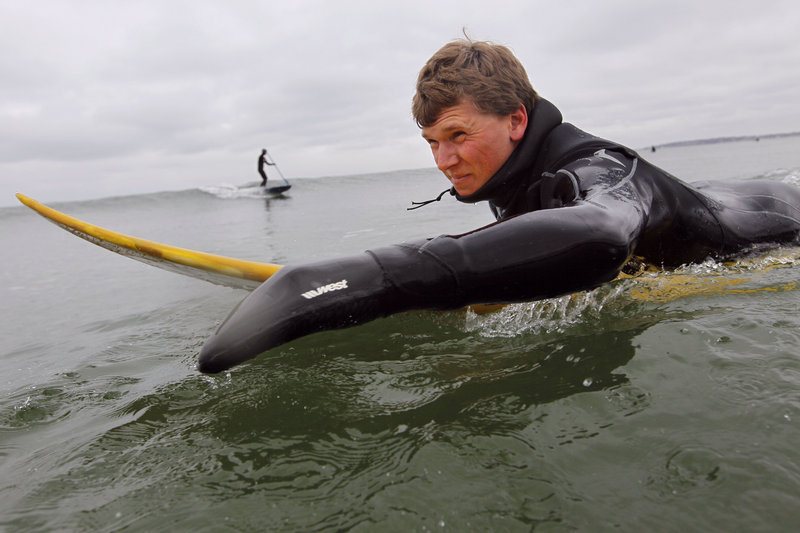This winter’s warmth has helped drive up water temperatures in the Gulf of Maine, and the warm waters could lead lobsters to molt their shells and ocean algae to bloom earlier than usual.
The continuing trend raises long-term questions about how rising ocean temperatures might affect the growth and reproduction cycles and distribution of fish and shellfish, whales, zooplankton and other marine life throughout the gulf.
Temperature affects all life processes, but it’s too soon to say whether changes brought on by rising water temperatures will be good or bad, said Jeffrey Runge, a biological oceanographer at the University of Maine and a researcher at the Gulf of Maine Research Institute in Portland.
“Higher temperature means higher growth rates, but it also means they require more food in order to attain those higher growth rates,” he said. “But whether there will be more food around, I don’t know.”
Gulf of Maine water temperatures have been rising gradually since at least the 1870s, with ups and downs along the way. The increase has been pronounced in the past decade or so, in the general range of 2 to 5 degrees depending on the ocean depth, Runge said.
The temperature rise in recent years is similar the rise in the 1950s, when the Gulf of Maine warmed up rapidly before cooling, Runge said Thursday in a phone interview from Spain, where he was attending a marine science meeting.
“The question now is whether this is something similar to that warm period in the ’50s, or if this is something different, because we have other forces, we have more (carbon dioxide) being put in the air than 50 or 60 years ago,” he said. “You can’t say what happened in the ’50s will happen now, that it will go down. … Who knows?”
The warmer temperatures could make lobsters molt and make their annual trek from offshore to near-shore waters earlier in the year. Shrimp could hatch their eggs earlier in the winter. In time, cod and other fish could migrate to the eastern part of the gulf — or out of the gulf altogether — in search of colder waters.
If the waters keep heating up, some scientists speculate that a species of plankton, Calanus finmarchicus, that is food for herring, mackerel, right whales and other forage species could diminish or even disappear from the Gulf of Maine.
And there are questions about ripple effects. For instance, warm water could cause shrimp eggs to hatch earlier than in the past — possibly before the bloom of phytoplankton that shrimp larvae feed on.
“These are all angles that you’d need to look into to determine what the effects are going to be,” said Dave Townsend, an oceanographer at the University of Maine.
Air temperatures in Portland have been well above normal for seven consecutive months, and last week’s warm spell shattered temperature records across the state for days in a row. Temperatures also are warm in the ocean.
On March 23, at the tail end of the warm streak, the surface water at a buoy in Casco Bay near Portland was 45.5 degrees, about 6 to 10 degrees higher than temperatures on that date in any of the past 10 years.
At a buoy in Penobscot Bay, off the state’s midcoast, the water temperature was 3 to 9 degrees warmer than readings in the past decade.
The Northeastern Regional Association of Coastal and Observing Systems monitors a series of buoys throughout the Gulf of Maine, which stretches from Cape Cod to Nova Scotia. The association collects data on water and air temperatures, wind speed and direction, wave height, and salinity levels.
Water temperatures have been increasing in recent years at all buoys and at all water depths, said Ru Morrison, executive director of the regional association, based in Rye, N.H. “It’s warming everywhere, at slightly different rates,” he said.
Send questions/comments to the editors.




Success. Please wait for the page to reload. If the page does not reload within 5 seconds, please refresh the page.
Enter your email and password to access comments.
Hi, to comment on stories you must . This profile is in addition to your subscription and website login.
Already have a commenting profile? .
Invalid username/password.
Please check your email to confirm and complete your registration.
Only subscribers are eligible to post comments. Please subscribe or login first for digital access. Here’s why.
Use the form below to reset your password. When you've submitted your account email, we will send an email with a reset code.